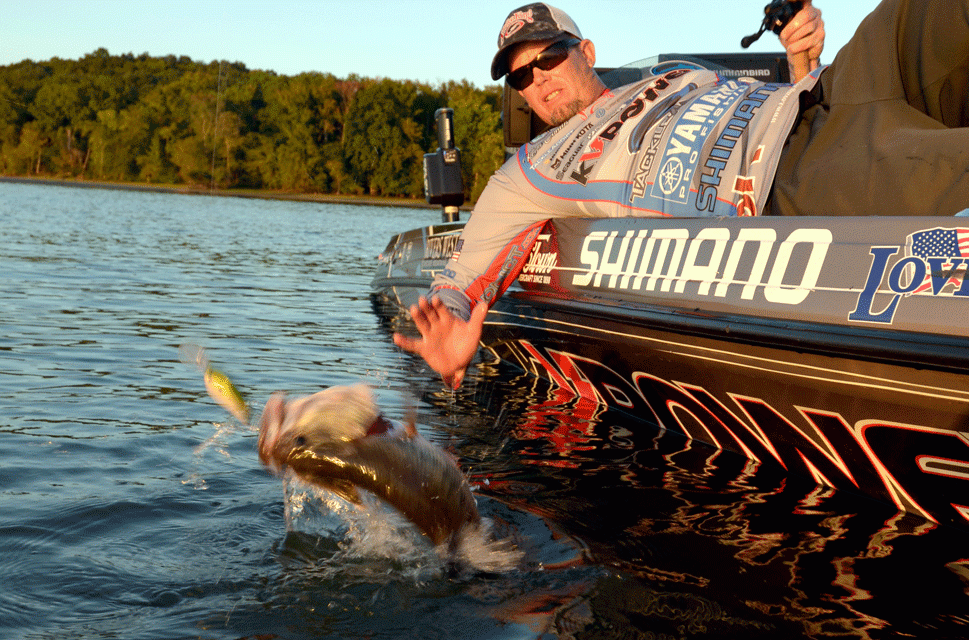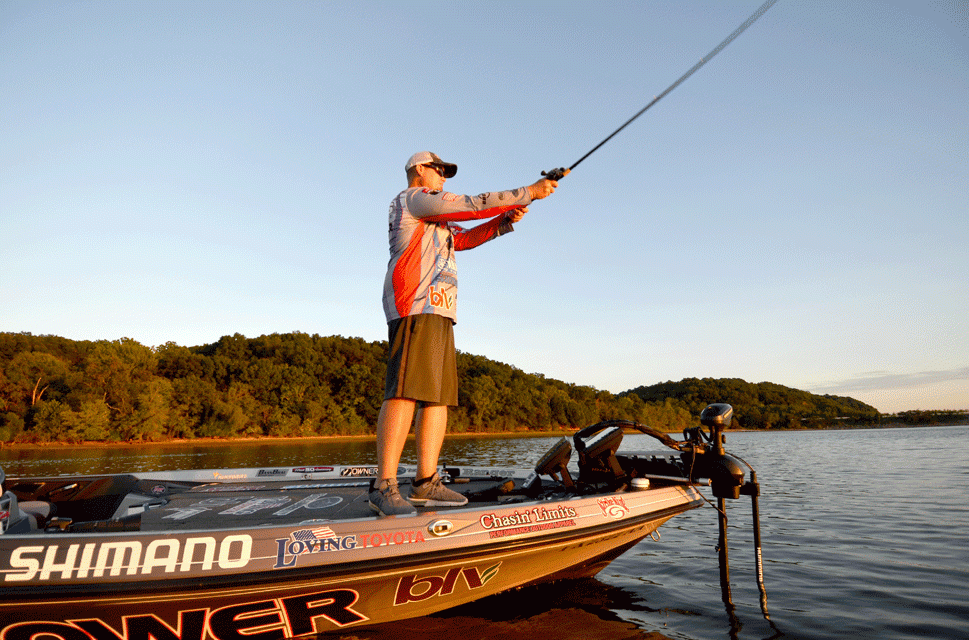
Texas Elite pro Keith Combs put the bass world on notice in 2013 when he cranked up 111 pounds, 5 ounces of largemouth to win a Bassmaster Elite Series tournament at Lake Falcon. He underscored his ability to sack heavy limits of offshore bass with crankbaits by winning the Toyota Texas Bass Fest (TTBF) tournament later that year at Lake Conroe with a three-day total of 62-12.
The following year he relied mainly on crankbaits again to win the TTBF event at Lake Fork with 15 bass that totaled a mid-boggling 110 pounds.
Anytime there’s an offshore bite, Combs is a threat to box a hefty limit of bass with his beloved crankbaits. The only time he doesn’t actively search for bass offshore is when they are spawning.
“But even during the spawn on places like Rayburn and Toledo Bend, tournaments have been won with deep crankbaits,” he said. “It’s almost a year-round thing. I’ve won a lot of money over the years on deep crankbaits when they shouldn’t have worked.”
Given his success with deep cranking, you might believe he has some secret formula for success. The truth is that his cranking strategies are about as basic as it gets.
“When I do seminars people always ask for more details than I can provide,” he said. “I keep it pretty simple. A lot of people don’t have success cranking because they don’t stay with it.”
Simple is as simple does
Three lures comprise the core of his crankbait arsenal, Strike King’s 5XD, 6XD and 10XD. He occasionally throws a few other crankbaits but only for what he calls “niche situations.” His color selection is equally simplistic, consisting of Powder Blue Back Chartreuse, Tennessee Shad and Sexy Shad.
“It doesn’t hurt to experiment with different colors, but I keep it pretty simple for the most part,” Combs said.
The stock hooks on any diving crankbait are too wimpy for him, especially when he is fishing a body of water known for growing heavyweight bass. He swaps out to Owner ST-35 Short Shank trebles, which he claimed are much stronger.
“If you don’t have a strong hook it will flex when a bass jumps and shakes its head,” he said. “That’s what causes you to lose a lot of fish on crankbaits. Light hooks are fine for 2- and 3-pounders. But you need a heavy hook for the big ones.”
A simple steady retrieve does the trick. However, it is imperative that the crankbait bump the bottom, a stump or some other object as it waggles its way back to the boat.
“A crankbait’s action gets a bass to move to the bait, but until it contacts something the bass usually won’t eat it,” he said.
Two Shimano Curado carbon-glass cranking rods handle Combs’ crankbait chores. A 7-foot medium action rod is the workhorse, while an 8-foot heavy action stick is reserved for slinging the 1.92-ounce Strike King 10XD.
He matches his rods with a Shimano Curado 200K 7.4:1 gear ratio reel, which has a large line capacity for long casts. In most situations, he fills the reel with 15-pound Seaguar InvizX Fluorocarbon. He will switch to 12- or 17-pound line when conditions call for it.

Electronics
The not so simple part of his crankbait equation is using the Side Imaging and 360 Imaging capabilities of his Humminbird electronics to find and catch bass.
“I wouldn’t have won any of those big tournaments without Side Imaging,” he said.
He relied on Side Imaging to locate schools of bass when he won the TTBC event at Lake Fork. Side Imaging and 360 Imaging carried him to victory during the TTBC tournament at Lake Conroe. At that autumn event he picked off individual bass by cranking offshore brush piles that were 6 to 12 feet deep.
“All I did on practice days for Conroe was idle around and mark brush piles with Side Imaging,” he said. “I didn’t fish any of them until the tournament started. That’s when 360 Imaging allowed me to quickly line up on each brush pile. I would hit it with one or two casts and run to the next one. I was able to fish a whole lot more brush piles in a day and run my crankbaits in front of more bass.”





